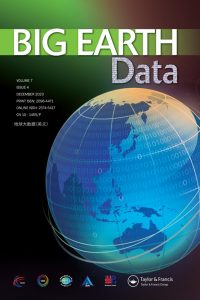Project Description

The following paper has been published recently in the Big Earth Data journal:
Larisa Sogacheva, Timo H. Virtanen, Anu-Maija Sundström, Pekka Kolmonen, Mikhail Sofiev, Hanna K. Lappalainen & Antti Arola (2024)Two decades of fire activity over the PEEX domain: a look from space, with contribution from models and ground-based measurements, Big Earth Data, DOI: 10.1080/20964471.2024.2316730
Short abstract below:
It has been suggested that forest fires will become more frequent/intense with changing climate, which would increase aerosol/gas emissions into the atmosphere. A better understanding of the relations between meteorological conditions, fires, and fire emissions will help estimate the climate response via forest fires. In this study, we use ERA5 meteorological products, including temperature, precipitation, and soil moisture, to explain the frequency of forest fires and the amount of radiant energy released per time unit by burning vegetation (fire radiative power, FRP).
We explore the relationships between satellite-retrieved fire products and aerosol properties (aerosol optical depth, AOD), carbon monoxide (CO), formaldehyde (HCHO), and nitrogen dioxide (NO2) concentrations over the PEEX domain, which covers different vegetation zones (e.g. croplands/grasslands, forest, arctic tundra) of Pan-Eurasia and China.
Using a 21-year satellite record of the AOD and CO, an 18-year record of NO2, and a 16-year record of HCHO, we created background products of those variables over the PEEX domain.
We calculated AOD/CO, AOD/HCHO, AOD/NO2 satellite-derived total column enhancement ratios for observations influenced by wildfires.
We analyse the concentrations of black carbon and absorbing organic carbon using ground-based AErosol RObotic NETwork.
Text by L. Sogacheva, Finnish Meteorological Institute
